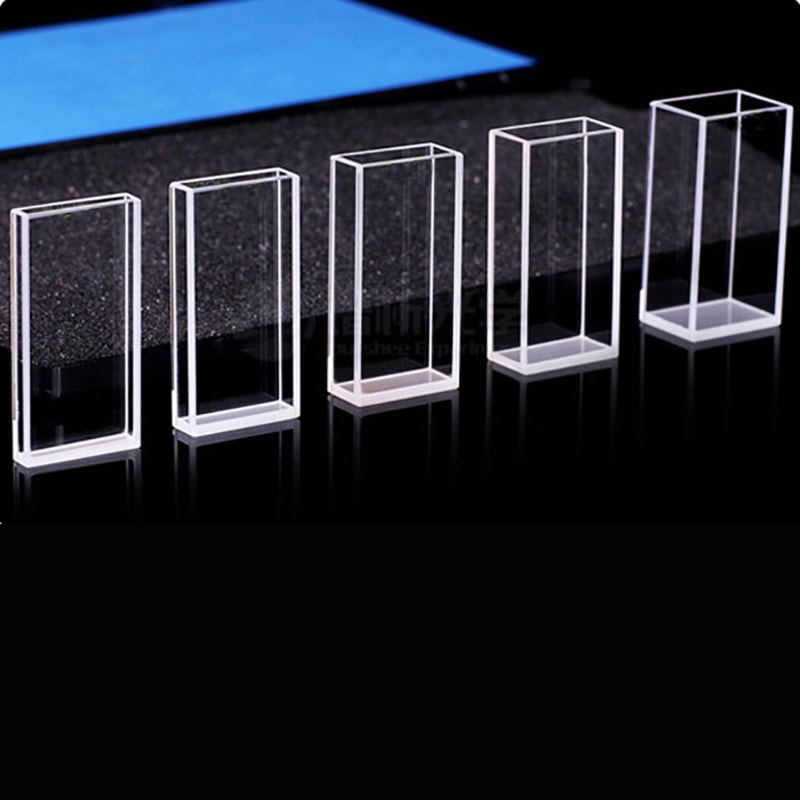Spectrophotometry that reveals the mysteries behind light transmittance and absorption at specific wavelengths, is an important method of discovery in science. At its heart lies the cuvette a humble yet critical vessel that holds samples to be analysed. These small containers might seem simple, but their design intricacies, from cuvette path length to material choice, hold the key to unlocking accurate data on substance concentration and purity. Let’s dive into this fascinating universe where the dimensions and cuvette size affect the results of each test.

Image credit: cuvet.co
The Power of Cuvette Path Length
Imagine a beam of light passing through the sample. The result will depend on the length of the path in the cuvette. This is how far light travels in the liquid. A lot of labs employ a standard cuvette with a 1 cm path. This is the ideal solution to balance sensitivity and practicality. Why is this important? The longer the distance, the more light is absorption which amplifies the signal for less concentrated samples. A shorter path could make significant difference when using high concentration solutions like proteins or nucleic acid. This reduces dilution and preserves the precious samples while reducing preparation time. The takeaway? The art of matching the path length with requirements for samples is subtle and improves reliability.
Cuvette Dimensions and Size more than meets the Eye
It’s not just about the amount of liquid that can fit inside the vessel. It’s important to consider how the vessel works with the spectrophotometer. Each cuvette is designed to meet a specific task and comes in a range of shapes and sizes. For instance semi-micro cuvettes, which have smaller dimensions and more robust walls handle tiny samples such as a few microliters an uncommon biological extract. The walls of a cuvette that are thicker reduce the space inside, allowing light to flow through a condensed sample without having to waste the drop. Compare that to a standard cuvette, it’s a stark contrast with fewer steps for pipetting more room for error, and results that hold up under scrutiny. This clever technique proves that the size isn’t simply a number, it’s a strategy.
The 1cm path length Cuvette is a favorite in labs.
Why is the cuvette that has 1 centimeter length being used in a lot of research? It’s the best for biological tests, as the samples are scarce and every milliliter is important. This standard design gives regular absorbance readings, without overloading the detector. It’s ideal for anything from DNA quality checks to enzyme assays. This is not a hero for all situations. It’s not a one-size-fits all hero. Precision relies on selecting the correct tool not only the one that is most familiar. A cuvette that is not properly matched can be compared to a poorly tuned instrument.
Materials Matters: More than Size and Path
Cuvette dimensions are only half the story. The choice of material makes a difference. The high transmission rates of glass and quartz cuvettes let light move through them without interference. Cuvettes made of glass are tough and reusable, making them ideal for spectroscopy. On the flip side, plastic cuvettes bring affordability and convenience to the table. They can be used and thrown away. You don’t have to clean, no risk of cross-contamination. They are ideal for aqueous tests or quick DNA/RNA tests. What’s the cost? The trade-off? The purists would prefer quartz, while pragmatists may prefer plastic.
Accuracy in Practice
Cuvettes’ flexibility is what makes them so attractive. Spacers in combination with short lengths of the path allow for the handling of concentrated samples while larger vessels can handle volumes. Each path length, size, or material will ripple through the lab which affects the clarity of the outcomes. Labs are analyzing one of the most rare proteins. A semi-microcuvette that has a short pathway can be able to avoid the dilution issues and produce accurate results quickly. If you compare it to an unwise cuvette swap during the experiment and the results are distorted It’s no wonder. It’s a reminder to remember that when it comes to spectrophotometry that the little details make the most impact.
Cuvettes may be small but their impact is immense. Cuvettes, which vary from 1 cm cuvette’s length to custom dimensions, provide a bridge between the specimen and the information. When it comes to precision or purity with the proper cuvette, it can transform a good measure into a fantastic evidence that in science, precision begins with the instruments at hand.